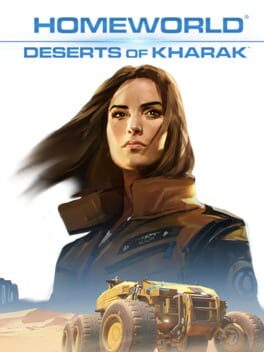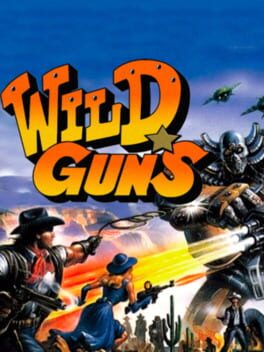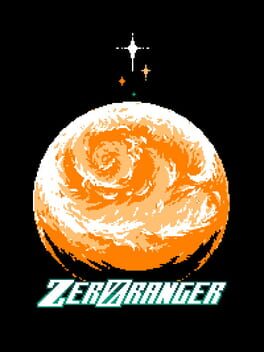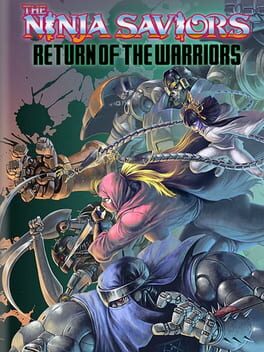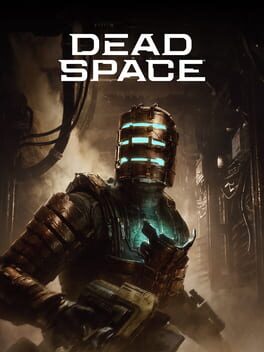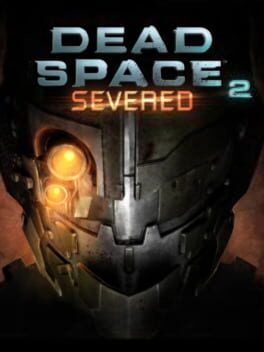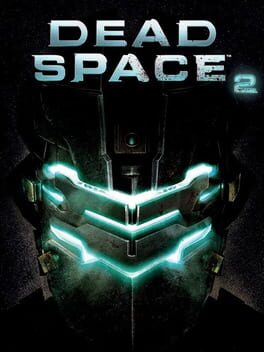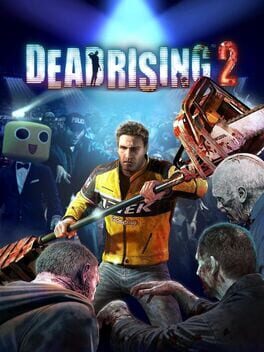JohnHarrelson
Bio
Really, every game needs a suplex.
(he/him)
Really, every game needs a suplex.
(he/him)
Badges

GOTY '23
Participated in the 2023 Game of the Year Event

Treasured
Gained 750+ total review likes

Famous
Gained 100+ followers

Pinged
Mentioned by another user

N00b
Played 100+ games

Adored
Gained 300+ total review likes

Trend Setter
Gained 50+ followers

2 Years of Service
Being part of the Backloggd community for 2 years

Loved
Gained 100+ total review likes

Gone Gold
Received 5+ likes on a review while featured on the front page

Well Written
Gained 10+ likes on a single review

Popular
Gained 15+ followers

Roadtrip
Voted for at least 3 features on the roadmap

Best Friends
Become mutual friends with at least 3 others

Donor
Liked 50+ reviews / lists

Liked
Gained 10+ total review likes

Noticed
Gained 3+ followers
Favorite Games
147
Total Games Played
010
Played in 2024
000
Games Backloggd
Recently Played See More
Recently Reviewed See More
Inessential.
Despite the many quality-of-life changes meant to bring this more in line with the rest of the series, like updating the Zero-G sections and letting you use your kinesis more offensively, the broad strokes of the game are surprisingly close to the original. A change I was really looking forward to was the “Intensity Director” which is meant to dynamically alter the mood of areas and what enemies will spawn, but in practice, this mostly seems to determine whether or not you’ll get ambushed while backtracking instead of radically altering the major combat encounter. It’s a nice thrill to occasionally get surrounded by enemies, but as with so many of the new features of the remake, it doesn’t wholly commit to this idea, more a proof-of-concept that could be really transformative if it was expanded on somewhere else. Basic Necromorphs are also substantially less threatening due to the fact that it’s surprisingly easy to stunlock them by stomping on them once their legs have been shot out, and for the sheer effectiveness of these newly revamped kinesis powers (encounters and the ammo economy needed to be dramatically changed to make threats meaningful the player).
Given that this production seems to owe so much to the success of the recent Resident Evil remakes, I wish it would’ve taken a cue from them and include some bolder pieces of design and pacing- throw in an extra Regenerator fight, change the order of levels, or go all the way and pull the best enemies from the entire series to give these fights an extra edge. There are earnest discussions to be had about what function the RE remakes serve (if they’re replacements or reimaginings) but at least they’re distinct- I’m compelled to go back to them from time to time!
Really, I think the hesitance to change to radically alter the structure and encounter design speaks to the real intent of this remake, which seems far more interested in making the narrative flow more seamlessly between this and Dead Space 2. Isaac Clarke more or less had to be invented as a character in the sequel, and that made the amount of screentime that was devoted to his guilt over Nicole all the more weightless- retconned baggage that hardly landed. The attempt to expand their relationship mostly works, the revelations here about how their relationship ended are much better about setting the groundwork for their arc in the sequel. For as strong as this dynamic, it seems to have come at the cost of much of the supporting cast; compared to their original versions, everyone on the Ishimura comes as the lifeless versions of themselves. Dr. Kyne and Dr. Mercer were amazing presences thanks to great performances by Keith Szarabajka and Navid Negahban respectively, but without that prior context, I’m not sure these new iterations of the characters will stay in the minds of those who’ve only played the remake.
The biggest sin is that the remake ends up being dreadfully boring to play through in practice, the threats so similar to the original that the horror doesn’t land and the action so easy to break that it actively feels like a regression from the constraints of the earlier version of combat design. There’s obvious passion for the project here, especially in some of the granular details, but seemingly not the broader vision needed to successfully combine the old and new ideas together.
Despite the many quality-of-life changes meant to bring this more in line with the rest of the series, like updating the Zero-G sections and letting you use your kinesis more offensively, the broad strokes of the game are surprisingly close to the original. A change I was really looking forward to was the “Intensity Director” which is meant to dynamically alter the mood of areas and what enemies will spawn, but in practice, this mostly seems to determine whether or not you’ll get ambushed while backtracking instead of radically altering the major combat encounter. It’s a nice thrill to occasionally get surrounded by enemies, but as with so many of the new features of the remake, it doesn’t wholly commit to this idea, more a proof-of-concept that could be really transformative if it was expanded on somewhere else. Basic Necromorphs are also substantially less threatening due to the fact that it’s surprisingly easy to stunlock them by stomping on them once their legs have been shot out, and for the sheer effectiveness of these newly revamped kinesis powers (encounters and the ammo economy needed to be dramatically changed to make threats meaningful the player).
Given that this production seems to owe so much to the success of the recent Resident Evil remakes, I wish it would’ve taken a cue from them and include some bolder pieces of design and pacing- throw in an extra Regenerator fight, change the order of levels, or go all the way and pull the best enemies from the entire series to give these fights an extra edge. There are earnest discussions to be had about what function the RE remakes serve (if they’re replacements or reimaginings) but at least they’re distinct- I’m compelled to go back to them from time to time!
Really, I think the hesitance to change to radically alter the structure and encounter design speaks to the real intent of this remake, which seems far more interested in making the narrative flow more seamlessly between this and Dead Space 2. Isaac Clarke more or less had to be invented as a character in the sequel, and that made the amount of screentime that was devoted to his guilt over Nicole all the more weightless- retconned baggage that hardly landed. The attempt to expand their relationship mostly works, the revelations here about how their relationship ended are much better about setting the groundwork for their arc in the sequel. For as strong as this dynamic, it seems to have come at the cost of much of the supporting cast; compared to their original versions, everyone on the Ishimura comes as the lifeless versions of themselves. Dr. Kyne and Dr. Mercer were amazing presences thanks to great performances by Keith Szarabajka and Navid Negahban respectively, but without that prior context, I’m not sure these new iterations of the characters will stay in the minds of those who’ve only played the remake.
The biggest sin is that the remake ends up being dreadfully boring to play through in practice, the threats so similar to the original that the horror doesn’t land and the action so easy to break that it actively feels like a regression from the constraints of the earlier version of combat design. There’s obvious passion for the project here, especially in some of the granular details, but seemingly not the broader vision needed to successfully combine the old and new ideas together.
Really charming Indiana Jones-themed Doom total conversion, fighting through waves of Nazis and undead guardians in ruins around the world. Biggest surprise for me was the strength of the scenario design and pacing- fully expected to see everything the game had to offer by the end of the first episode, but there’s steady introduction of new enemies and weapons, alongside some nice breaks in the formula to keep things interesting. A definite highlight is the start of the Egypt episode, a dense shootout full of destructible props in a museum that’s far more open to exploration than the linear action of much of the rest of the game- and which also demonstrates how strong and varied the roster of hitscan enemies here are.
While I think Venturous is a little too conservative with it’s Doom II analogs, only rarely making you fight Revenant and Archvile equivalents- and usually at the end of episodes- having to prioritize heavy-machine gunners or grenadiers goes a long way in spicing up the action. The best trick it pulls that really capitalizes on this variety is ambushing you whenever you’ve just cleared out an area, foot soldiers pouring in right as you’ve gotten a handle on the undead hordes. It should get stale after a while, but the steady alternation and escalation of these threats more than carries the combat for the duration, bread-and-butter arena fights against monsters and more tactical shootouts against humans.
Ended up wrapping up a playthrough of the 1.3 release right as the newest update dropped, which includes an additional episode in Greece and generally fills out the game really nicely- with an extra visual pass and remixed level arrangements. One of my original criticisms was how weak the ending was, fighting a simplistic boss that you could circle-strafe around and lock down with machine gun fire, now traded out for one where you’re only armed with the magically-infused weapons, the boss now able to use attacks from the entirety of the enemy roster. I didn’t die on either encounter, and it still functionally boils down to circle-strafing it until you deplete its health bar, this newest version is unambiguously the fuller experience- and is a microcosm for the ways the game has been bolstered overall, visually sharper and more novel mechanically.
Even with all the positive changes, levels can still get kind of homogeneous by the end. You can only delve into lost tombs and ancient ruins so many times before it all starts to blur together- as unusual as it may sound from me, probably a sign that the game could’ve used some breaks from all the combat: a couple of gimmick levels, like some kind of teleporter puzzle or a proper labyrinth map could’ve gone a long way at selling the adventurer fantasy in a way combat tunnels just don’t provide (or really go for broke and make a besieged town built over some ruins as a hub area, similar to other shooters like Afterglow and Hedon).
Otherwise, amazing to see the jump in quality from the 1.3 to the 1.5 release- gave me the unusually good problem of having to throw out a bunch of my criticisms on the game, and the newly-included cliffhanger ending has me eager to see what this developer decides to tackle next.
While I think Venturous is a little too conservative with it’s Doom II analogs, only rarely making you fight Revenant and Archvile equivalents- and usually at the end of episodes- having to prioritize heavy-machine gunners or grenadiers goes a long way in spicing up the action. The best trick it pulls that really capitalizes on this variety is ambushing you whenever you’ve just cleared out an area, foot soldiers pouring in right as you’ve gotten a handle on the undead hordes. It should get stale after a while, but the steady alternation and escalation of these threats more than carries the combat for the duration, bread-and-butter arena fights against monsters and more tactical shootouts against humans.
Ended up wrapping up a playthrough of the 1.3 release right as the newest update dropped, which includes an additional episode in Greece and generally fills out the game really nicely- with an extra visual pass and remixed level arrangements. One of my original criticisms was how weak the ending was, fighting a simplistic boss that you could circle-strafe around and lock down with machine gun fire, now traded out for one where you’re only armed with the magically-infused weapons, the boss now able to use attacks from the entirety of the enemy roster. I didn’t die on either encounter, and it still functionally boils down to circle-strafing it until you deplete its health bar, this newest version is unambiguously the fuller experience- and is a microcosm for the ways the game has been bolstered overall, visually sharper and more novel mechanically.
Even with all the positive changes, levels can still get kind of homogeneous by the end. You can only delve into lost tombs and ancient ruins so many times before it all starts to blur together- as unusual as it may sound from me, probably a sign that the game could’ve used some breaks from all the combat: a couple of gimmick levels, like some kind of teleporter puzzle or a proper labyrinth map could’ve gone a long way at selling the adventurer fantasy in a way combat tunnels just don’t provide (or really go for broke and make a besieged town built over some ruins as a hub area, similar to other shooters like Afterglow and Hedon).
Otherwise, amazing to see the jump in quality from the 1.3 to the 1.5 release- gave me the unusually good problem of having to throw out a bunch of my criticisms on the game, and the newly-included cliffhanger ending has me eager to see what this developer decides to tackle next.
When I was younger, I thought Dead Space 2 was the usual case of a horror game starting incredibly strong and then weakly limping to the finish, but this most recent playthrough has totally inverted my opinion; while the first half gets all the nicest areas and flashiest setpieces, it’s the second half, where you’re funneled through the metal guts of the station, that the encounters start to pick up, with a wider range of enemies to deal with and a playful sense of meanness to the combat design- like a memorable room where the game spawns an explosive enemy right next to a breakable window that’ll send you out into the vacuum of space if you so much as touch it. The final section is amazing as well, chased by a regenerating necromorph that gets the best use out of your busted kit out of all the challenges in the game, forced to push through hordes of enemies while this unstoppable enemy is constantly shadowing you.
But all this should be couched in the fact that many of its best moments here hover around the opening 30 minutes of RE4- you’ll be really lucky if you’re fighting multiple waves of enemies or have to make meaningful decisions of who to prioritize first in combat, the designers seemingly all too comfortable to throw the standard melee and acid-spitting necromorphs at you and a haphazard assortment of the other enemy types as a little bit of flavor. Some of this flattening is due to how powerful your Stasis ability is: because so many of the encounters take place in this tiny corridors and cramped hallways, it’s really easy to negate the threat of an ambush or poor positioning by freezing an enemy and dismembering them with little thought on your part, aided by how generous the game is with dropping stasis packs and doling out recharge stations. It’s something especially felt with the Stalker enemies, a standout addition deemed so important that they get their own dedicated rooms, but they end up being some of the simplest in practice- boiling down to hunkering in a corner and waiting for them to run at you, a cool enemy type that feels unfinished when fought on their own. (The fact that you never fight these guys while dealing with your O2 meter is a massive shame, something that might’ve curbed how easy it is to passively engage them.)
Maybe the most damning thing here is that the weightlessness of the new additions to the bestiary highlight just how well-considered the original’s enemies were, testing you on the applications of the dismemberment system and on third-person shooting in a way none of the new creatures do- the frantic, vertical movement of the scorpion-like Leapers or the surgical precision demanded for the Pregnant necromorphs, diluted here with a lot of stuff that swarms you and that can be beaten out more simply with direct damage. A lot of the discussion about the two games centers on the weakening of the survival horror elements from the first entry to the second, but I think this less defined mechanical identity is probably the bigger loss for the series.
Still, a hard game for me to really dislike- nails the feedback for combat (even reloading looks cool!) and I’m not sure if another game has had a better justification and visualization for the combat tunnel/amazing skybox/combat tunnel structure than working your way through the various sectors of a dystopian mining station. Was ultimately reminded a lot of my time going through Titanfall 2 a few years ago, a strong string of setpieces and a great-feeling avatar not able to shake the feeling that the encounter design never really pushed the mechanics far enough.
Extra thoughts:
- Played through the game on Zealot, and got about halfway through on the limited-save Hardcore difficulty before losing a couple of hours of progress when I clipped through the floor of a tram and opted to call it there. Otherwise, I think these are pretty admirable difficulty modes, the increased lethality and reduced ammo of the former and the endurance needed for the latter do a nice job at recontextualizing the game. Granular bits of optimization, like being able to use random kinesis objects to slowly bludgeon enemies to death and getting a free refill on ammo and health when you upgrade their capacity, turn into run-saving maneuvers when you're under so much pressure. Good stuff.
- The Severed DLC is slightly more respectable than I remembered- the stasis enemies from Dead Space 1 aren’t a super-noticeable addition, but going backwards through old areas is far less egregious than it sounds, both due to some nice enemy arrangements (probably has the best Stalker encounter in the game) and for the fact that the player character comes with a predefined loadout that might get you to see a different side of the arsenal. Would never have used the Seeker rifle otherwise, for instance.
But all this should be couched in the fact that many of its best moments here hover around the opening 30 minutes of RE4- you’ll be really lucky if you’re fighting multiple waves of enemies or have to make meaningful decisions of who to prioritize first in combat, the designers seemingly all too comfortable to throw the standard melee and acid-spitting necromorphs at you and a haphazard assortment of the other enemy types as a little bit of flavor. Some of this flattening is due to how powerful your Stasis ability is: because so many of the encounters take place in this tiny corridors and cramped hallways, it’s really easy to negate the threat of an ambush or poor positioning by freezing an enemy and dismembering them with little thought on your part, aided by how generous the game is with dropping stasis packs and doling out recharge stations. It’s something especially felt with the Stalker enemies, a standout addition deemed so important that they get their own dedicated rooms, but they end up being some of the simplest in practice- boiling down to hunkering in a corner and waiting for them to run at you, a cool enemy type that feels unfinished when fought on their own. (The fact that you never fight these guys while dealing with your O2 meter is a massive shame, something that might’ve curbed how easy it is to passively engage them.)
Maybe the most damning thing here is that the weightlessness of the new additions to the bestiary highlight just how well-considered the original’s enemies were, testing you on the applications of the dismemberment system and on third-person shooting in a way none of the new creatures do- the frantic, vertical movement of the scorpion-like Leapers or the surgical precision demanded for the Pregnant necromorphs, diluted here with a lot of stuff that swarms you and that can be beaten out more simply with direct damage. A lot of the discussion about the two games centers on the weakening of the survival horror elements from the first entry to the second, but I think this less defined mechanical identity is probably the bigger loss for the series.
Still, a hard game for me to really dislike- nails the feedback for combat (even reloading looks cool!) and I’m not sure if another game has had a better justification and visualization for the combat tunnel/amazing skybox/combat tunnel structure than working your way through the various sectors of a dystopian mining station. Was ultimately reminded a lot of my time going through Titanfall 2 a few years ago, a strong string of setpieces and a great-feeling avatar not able to shake the feeling that the encounter design never really pushed the mechanics far enough.
Extra thoughts:
- Played through the game on Zealot, and got about halfway through on the limited-save Hardcore difficulty before losing a couple of hours of progress when I clipped through the floor of a tram and opted to call it there. Otherwise, I think these are pretty admirable difficulty modes, the increased lethality and reduced ammo of the former and the endurance needed for the latter do a nice job at recontextualizing the game. Granular bits of optimization, like being able to use random kinesis objects to slowly bludgeon enemies to death and getting a free refill on ammo and health when you upgrade their capacity, turn into run-saving maneuvers when you're under so much pressure. Good stuff.
- The Severed DLC is slightly more respectable than I remembered- the stasis enemies from Dead Space 1 aren’t a super-noticeable addition, but going backwards through old areas is far less egregious than it sounds, both due to some nice enemy arrangements (probably has the best Stalker encounter in the game) and for the fact that the player character comes with a predefined loadout that might get you to see a different side of the arsenal. Would never have used the Seeker rifle otherwise, for instance.
